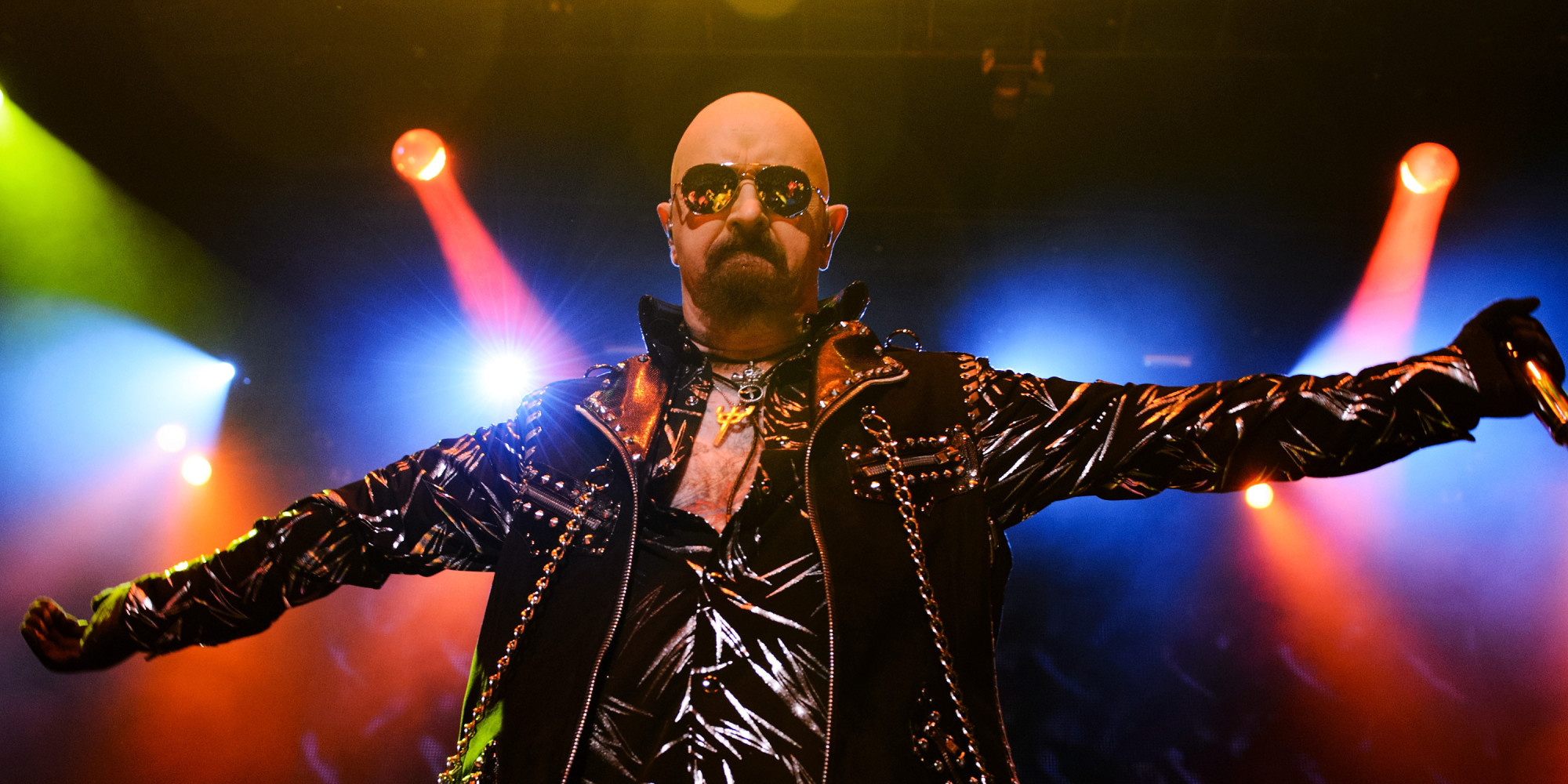Heavy metal has always had an affiliation with the dark – here Edmund Goldrick investigates how this darkness strays beyond the occult and spooky into the sociopolitical.
This was supposed to be an uplifting piece about LGBT+ in Heavy Metal and the progress that’s been made. This is not that piece. There are some positives, but it’s largely a dive into the darker side of the scene. Personally, this was a difficult piece to write. I’ve had overwhelmingly positive experiences in Metal, the people I’ve met through the scene have brought unparalleled joy and beauty into my life, and the music is bloody awesome. To see that as the whole scene, however, would be wilful ignorance.
Rob Halford was, naturally, the starting point. Judas Priest’s lead vocalist, he was the first openly gay person in the genre; he helped create Metal, and pioneered the leather and studs look that has stuck with the genre ever since (more about that later). This was where I ran out of openly LGBT+ people I could use as positive examples of the community. I had intended to talk about Kristian ‘Ghaal’ Espedal, but it turns out he advocates church burning and was convicted of aggravated assault, so not a good role model there. Also one to consider was Otep, but she gets so much flak it raises startling questions about sexism in the genre.
The reason for this scarcity is, in my view, due to two reasons. More positively, Metal fans are generally uninterested in artists’ private lives. There are very few ‘personalities’ in Metal, and there’s no cottage industry turning out celebrity gossip. Metal media tends to revolve solely around touring and music, private life usually only comes up if a band stops touring or recording because of it. The second is that, from my experience, Metal attracts a disproportionate fan base from the far left, and the far right. This isn’t surprising, like Punk it is an aggressive music that attracts those who feel disenfranchised. Unlike Punk, however, bands and fans are not easily identifiable by social beliefs.
Common Metal themes include: the occult, science fiction, fantasy, history, anger, and depression. It is rare for a Metal band to regularly discuss social or political issues. It’s much easier to keep fans with social divisions together when you’re singing about dragons or life’s fleeting misery. When bands do take political stands, this risks alienating fans. I had a chance to see this when German Death Metal band Varg (not to be confused with Varg Vikernes), performed at Metaldays. In 2016 Varg released Das Ende aller Lügen, that declared, rather violently, that people who didn’t want to welcome refugees should shut it. Despite the fact that Metaldays has a strong hippie streak, opinion on Varg’s new direction was divided, and many fans seemed disgruntled. This division probably helps explain why there are so few openly LGBT+ people, and why so few bands touch on social issues.
In good news, rainbow flags are becoming a more common sight at Metal festivals, and the gender ratio continues to improve. However, there is a grim contrast. Last year, at my second Wacken Open Air, there were, and I speak no hyperbole, Nazis in my camp. A wretched group of simpleton, SS apologising, Saxon Nazis. Another shock came in the research for this article. In 2014, Wacken announced the triumphant reunion of Emperor, a Norwegian Black Metal Band. I was there that year too. I passed the stage, gave it a quick listen, and kept walking; it wasn’t really my style. What I didn’t realise is that the reunion featured drummer Bard ‘Faust’ Eithun. Eithun murdered a man in 1992 simply because that man was gay. No one, from the festival organisers, to his band mates, the legions of fans gathered around or the many who have interviewed him since, have asked ‘Are you repentant?’ Terrifyingly, no one seems to care.
Despite this, LGBT+ has contributed much to Metal culture. The leather, studs and spikes that have been gleefully adopted, especially by the more extreme sub genres, including Black Metal, were brought to the scene by Rob Halford. He bought the initial outfits from the gay BDSM shops in London. How’s that for irony? To make matters more convoluted, the culture between Metal sub-genres differs wildly. Power, Symphonic and Folk Metal are generally far more relaxed and liberal, while more extreme subgenres, drawing on much darker themes, tend to be less so. There is, however, a lot of crossover in the fan bases, so it would be folly to try and contain cultural problems to a single sub-genre.
I am ashamed to say progress will come slowly, and painfully, if it comes at all.
Edmund Goldrick

